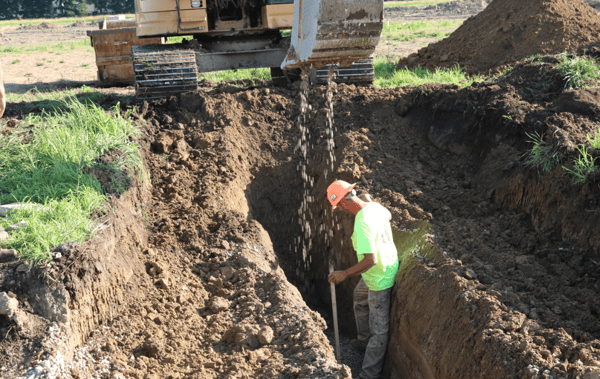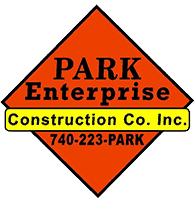
Whether you're embarking on your first or 100th project, you still might be wondering what exactly trench backfill is, does, and how it affects your overall project budget.
The best way to understand the backfill needed on your project is to talk openly with your contractor. Proper backfill processes require knowledge of the specifications and the soil conditions to ensure optimal performance.
We put together this guide of general considerations to keep in mind and help you better understand backfill.
Trench Backfill Basics
Let’s start at the beginning: Why should you care about your trench backfill material?
The primary function of trench backfill is to minimize and reduce the chance of a trench settling, shifting, and eroding underneath paved areas. This could lead to damage to new roadways, curbs, and sidewalks if settling occurs.
When this happens, there is no easy fix. Typically, the settled area will be dug up and new backfill will need to be placed and compacted. Most likely, the damaged road, curb, or walk would need to be replaced too.
Choosing the Appropriate Backfill Material
You probably don’t need us to remind you that cheaper is not always better -- but trench backfill material is a great example of the old adage “pay now or pay later.”
When selecting backfill, it can be easy to go for the cheapest option, since it will be underground, and altogether forgotten about once the project is done. But, choosing weak and cheap backfill has expensive consequences if installed improperly.
Always ask your contractor for their recommendation for your project before selecting. If they’re suggesting something pricier than you expected, have them walk you through the type of backfill and consult the guide below.
Trench Backfill Types: Explained
Depending on the project, the type of backfill needed may be governed for you in advance. For private commercial work most contractors follow the local jurisdictions specifications. For public or municipal work -- the engineer in charge of the project will be selecting the backfill.
Understanding the types of backfill that you might be selecting is key in ensuring the longevity of your project upon completion.
In most cases, there are 4 types of backfill to worry about. Switching to a soil at certain heights above the pipe may be allowed.

-
Uncompacted Soil Backfill
This is comprised of whatever soil material is on site. It is simply putting the moved soil back in the trench without any compaction effort. It will then need to be mounded up to prevent settling.
This is the cheapest option -- but after it settles, it may require re-grading.
Compacted Soil Backfill
Similar to the first choice, it is comprised of what material is already on the site. However, this soil is then compacted.
This is still an inexpensive backfill option, but does come with a cost increase compared to uncompacted native soil.
Compacted Stone Backfill
This is compacted granular backfill, or stone, which substantially reduces the probability of settlement.
This makes it particularly applicable in areas that need to be paved.
Controlled Density Fill (Also known as lean concrete)
This fills the trench without a need for a secondary compaction operation.
This is suitable for particularly narrow areas that cannot handle a large piece of machinery for compaction, or in areas that are heavily trafficked and need to be completed sooner.
Did We Lose You?
Chances are, you don’t want or need to be a trench backfill expert -- and that’s what we’re here for.
At Park Enterprise Construction, we ensure that our trench backfill options are within a reasonable price range, while also being long-lasting for your property. We are always happy to talk you through the trench backfill, and any other component of your project, just give us a call!



